
Similar to purchasing the tools for fly tying, trying to decipher what the essential materials are can put a beginning tier into a head spin. Many of the materials available are not absolutely necessary for the beginner, but rather are used sparingly on nontraditional patterns. In fact, most first-rate fly tiers are capable of producing high quality flies created with a minimum of equipment. Using quality materials from the start has advantages for the beginner tier. Flies will be better simply because the quality of the materials used (more durable), but also tying with materials that are produced specifically for tying makes tying flies easier and much more enjoyable.
The materials listed below are the basic materials needed to outfit a beginner's fly-tying kit.
Dubbing Mixtures: Dubbing is the material that makes up the majority of the bodies on fly patterns. Dubbing gets "spun" onto the tying thread and then wound on the hook to form the body of the fly. Basically dubbing can be categorized into a few different broad groupings: natural and synthetic, fine and coarse. The finer dubbings are used to tie smaller dry flies while the coarser materials are used to tie nymphs.
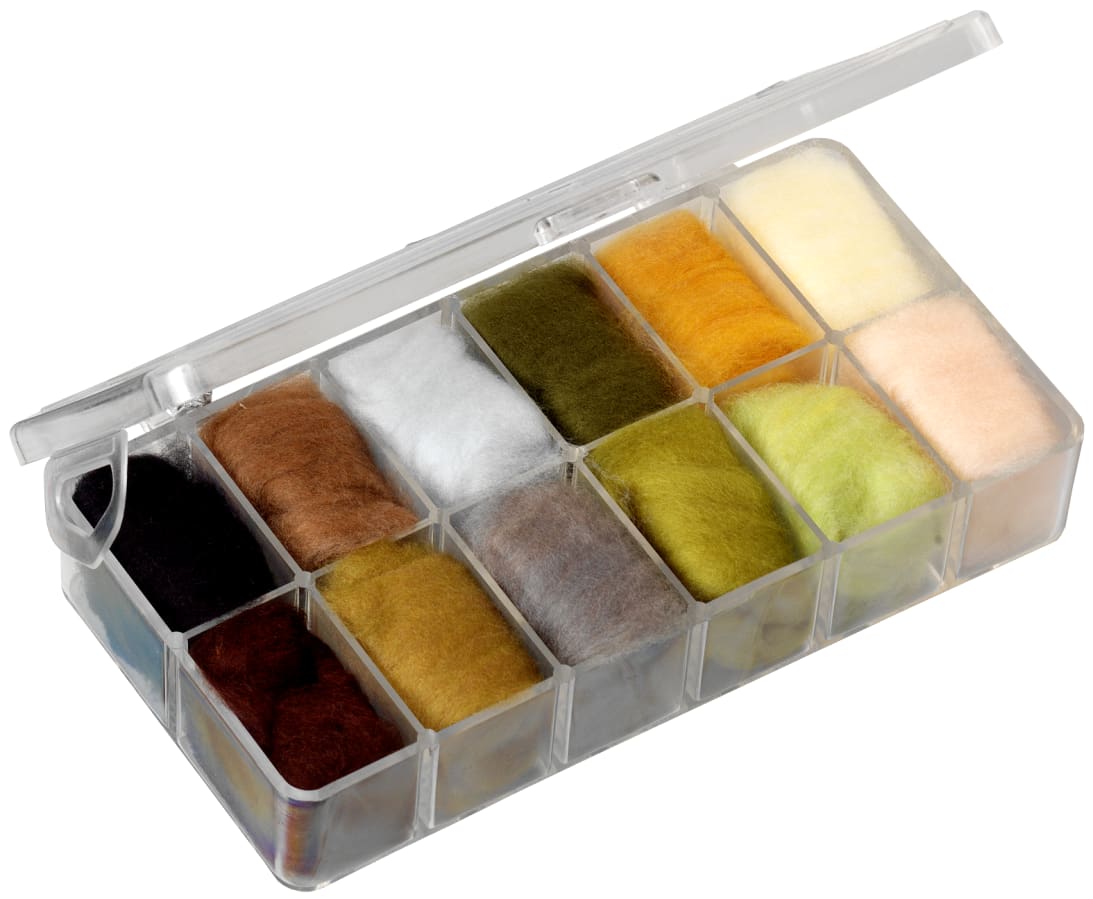
Wapsi Dubbing Dispensers Super Fine Dubbing
Smart assortment of 12 terrific colors packed into a plastic Dubbing Dispenser to ensure the color you need is right at your fingertips. The Super Fine dubbing is a synthetic microfiber dubbing that's been permanently waterproofed and allows the tightest control on traditional flies and very small flies of all types.
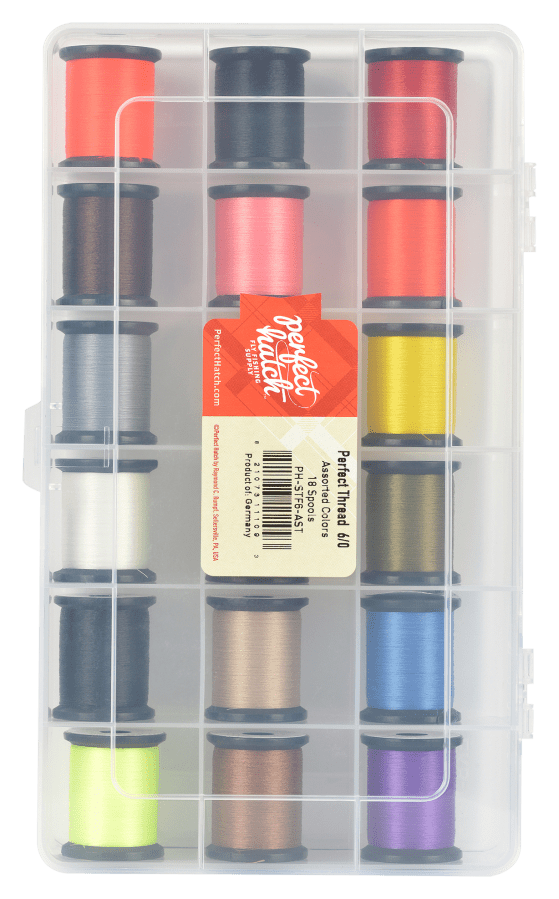
Perfect Hatch 6/0 Perfect Thread 18-Spool Assortment
The Perfect Hatch 6/0 Perfect Thread 18-Spool Assortment is exceptional thread for tying those smaller flies between #14 and #22. This strong 6/0 thread lays flat, meaning just a few turns are more than enough for fixing materials to your flies. Each spool contains 100 yards of 6/0 thread.
It's a good idea to start off your dubbing collection with earth tones.
Dubbing comes in a wide variety of colors and shades and can be blended together to get special shades to match the bugs hatching in your area. Certain animal furs make better dubbing than others. Rabbit, beaver, muskrat and squirrel are hard to beat when it comes to natural fur dubbings and can be used to tie the smallest of flies to the buggiest of nymphs. Beaver and muskrat fur is great for forming tight dry fly bodies due to the fur's ultra-fine consistency and natural water-repellent nature.
Rabbit fur on the other hand is handy for creating underwater patterns such as nymphs and leeches. Rabbit fur absorbs water quickly and produces a seductive undulating motion when moved underwater.
As far as synthetics are concerned, there are many varieties available that offer anything from sparkle to rubber varieties. A good idea is to start your dubbing collection with earth tones. Most of the natural insects you will be trying to imitate will be a shade of these earthy colors. Some of the colors you should look for should be: black, brown, natural tan, rust, olive, cream, near-white, gray, pale yellow.
Thread: Fly-tying thread comes in a wide variety of different colors and sizes. 8/0 size thread is best for tying the smaller sized flies (12-22) and especially good for dry flies. 6/0 thread is what is considered to be the general purpose tying thread. It can be used for tying anything from large streamers to small nymphs while 3/0 sized thread is used for large bass bugs or baitfish imitations. Tying thread comes in two different styles, a monochord thread or a flat prewaxed multistranded thread. The monochord is the best for beginners since it is one single strand of thread and has less chance of fraying while tying. A good idea for beginners is to start out with 6/0 tying thread seeing as it is strong and has a small diameter. Once you become a little more advanced a good idea is to get the thinnest thread possible to tie your patterns. This is particularly important when tying dry flies so that you can reduce the bulk at the head of the fly.
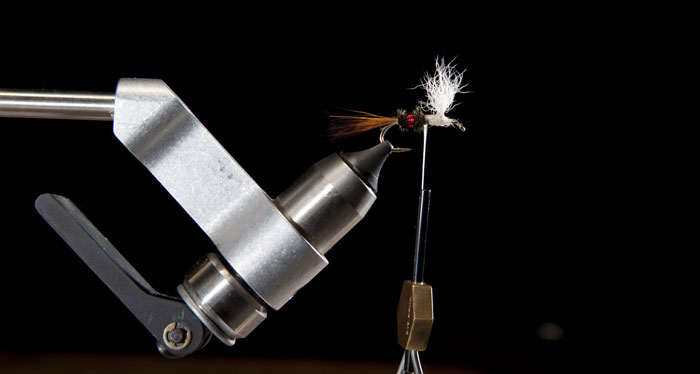
Hackle Feathers: Hackle is a type of feather taken from birds (mostly chickens). The hackle feather can be from either a hen or a cock, but generally "hackle" refers to the feathers of the cock unless specified as hen hackle. In addition to this, hackle feathers can be harvested from two areas of the body, the "neck" or the "saddle." Generally the "neck" hackle feathers have a smaller and finer grade and are more expensive than the hackle taken from the "saddle." Hackle fibers can be still be further separated into three grades: grade 1, grade 2 and grade 3. These grades refer to the quality of the actual hackle feather, where grade 1 is the best and grade 3 is the worst. For beginners a grade 2 is the best choice. You still get high quality dry fly hackle feathers but also a few feathers of larger sizes to practice a few bass bugs or streamer flies. Again, if you are starting out, hackle fibers in black/white grizzly and furnace brown will be the most useful.
Dubbing Wax: Dubbing wax is a substance used to provide a tacky surface on the thread so that dubbings will adhere. Dubbing wax is a very useful material for beginners to experiment with. Each dubbing wax brand has a different tackiness so asking around and testing out a few different products can help you decide what will best suit your needs.
Using the right hook is the most important rule of fly tying.
Hooks: One of the most important rules to remember when learning to tie flies is that you cannot build a proper fly on the wrong hook. Hook shape, size, and strength are some of the most important aspects to fly tying. You would not want to fish for tarpon with a light wire hook the same way as you would not use heavy nymph hook for tiny dry flies.The hook size is defined as the width of the gap. This is the distance from the shank of the hook to the point. The length of the shank of a standard hook is roughly 1 1/2 times that of the gap.
The shape of the hook is defined by the bend. There are two other descriptors: the diameter of the wire and length of the hook compared to the standard hook sizes. If the diameter of the hook is thinner than that of the standard hook, it will be noted as X-light, likewise if it is thicker; it will be noted as X-strong. Similarly, the length of the hook is also compared to the standard hook length and depending if it is longer or shorter it will be denoted as X-long or X-short. In general the X-fine hooks are used for dry flies and the X-heavy for nymphs. The X-short flies are used for small flies and the X-long for streamers. Specialty hooks like curved shank and scuds are also available and are for used grasshoppers and small shrimp imitations.
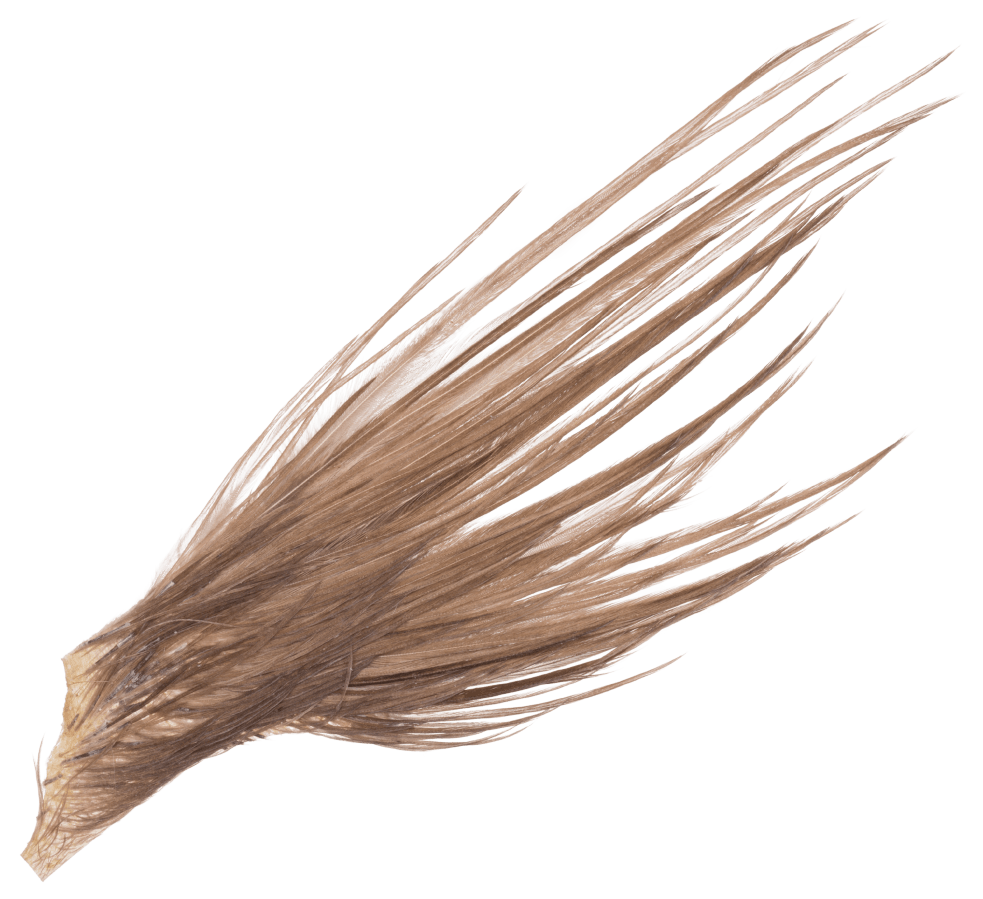
White River Fly Shop Dry Fly Neck Hackle
Craft great-looking patterns with White River Fly Shop® Dry Fly Neck Hackle. These versatile, top-quality fly tying feathers are ideal for tying wings and tails on dry flies, and come in multiple sizes to precisely match your hook sizes.
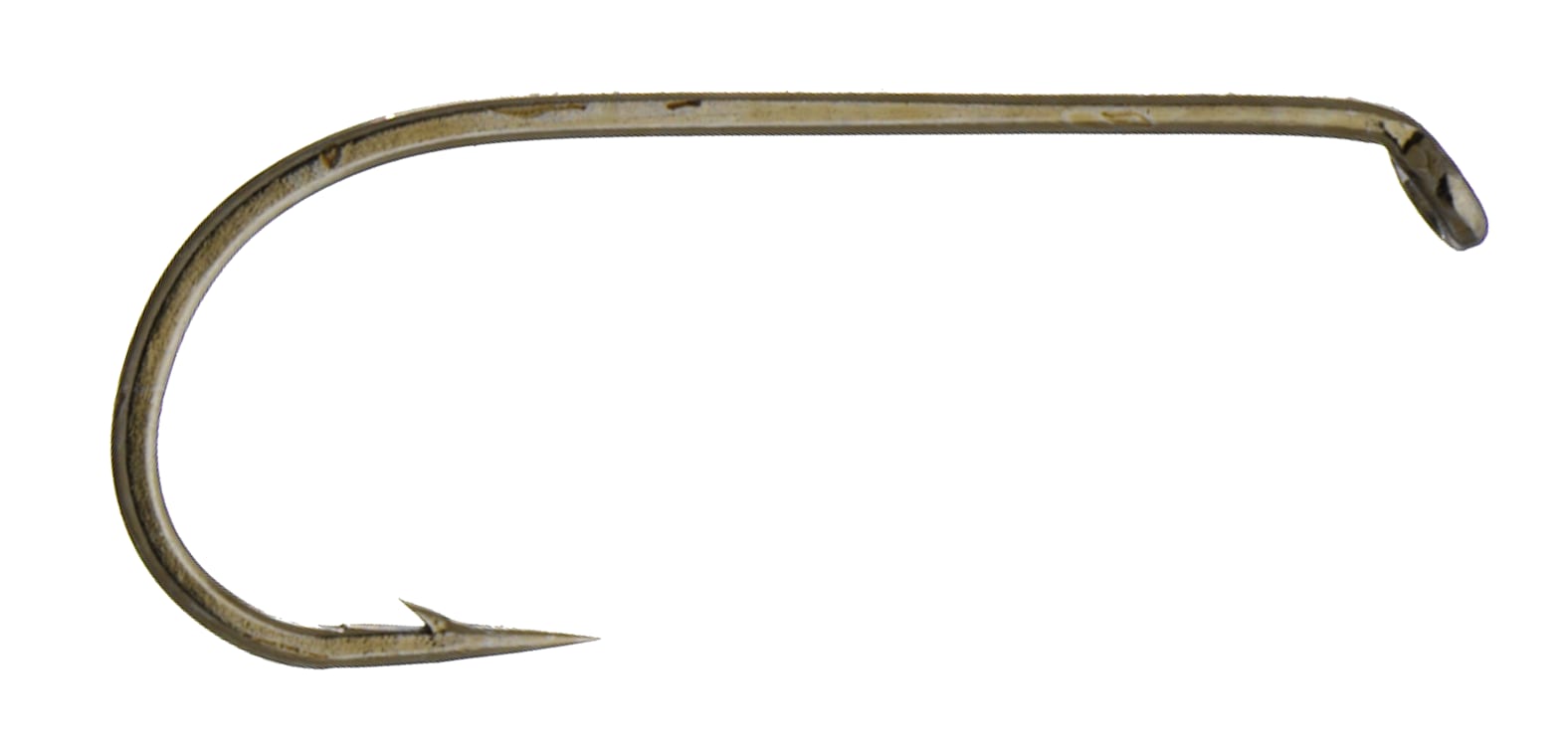
White River Fly Shop Dry Fly Hook
As finely crafted a dry fly hook as you'll find anywhere! Crafted from chemically sharpened, high-carbon steel, our White River Fly Shop® Dry Fly Hook features light wire, standard dry-fly dimensions, low-profile barb, and a precisely finished eye.
As fly tiers, we try and imitate the size of the insects we see, so it is the length of the hook shank that is important rather than the hook gap. The length and shape of the hook will determine if the pattern looks like the natural, and if the fish will be fooled by it.
Head Cement: Quality head cement is something that fly-tiers cannot be without. Head cement serves two general purposes. The first purpose is to seal the head of the fly and protect the thread wraps so that they do not become undone. For this protecting purpose head cement that is thin is needed so that it can penetrate the thread wraps completely and seal the thread together tightly. The second purpose of head cement is to make a glassy coating on the fly head so that eyes can be painted on top. If you are going to be tying baitfish patterns that require a build-up of cement to finish the head then a thicker variety of cement should be used. For smaller dry flies a thinner variety of cement should be used so that there is minimal build up on the head of the fly.
Although the materials listed above only scratch the surface of what you could use on you tying bench, these basic materials will be used in almost every fly you tie.
- 11557 views

